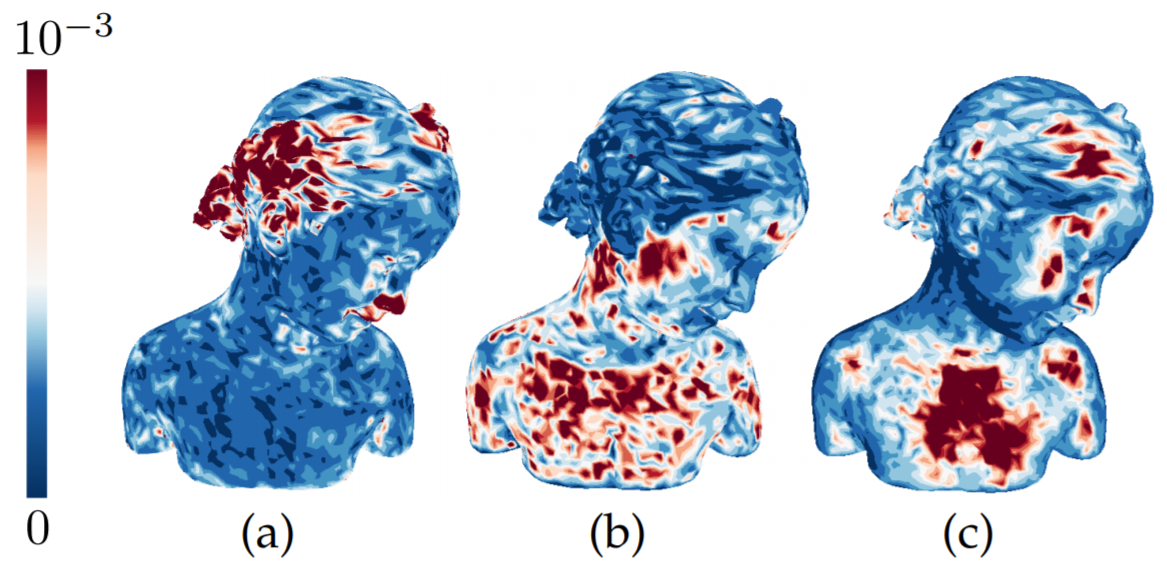Just noticeable distortion profile for flat-shaded 3D mesh surfaces

Abstract
It is common that a 3D mesh undergoes some lossy operations (e.g., compression, watermarking and transmission through noisy channels), which can introduce geometric distortions as a change in vertex position. In most cases the end users of 3D meshes are human beings; therefore, it is important to evaluate the visibility of introduced vertex displacement. In this paper we present a model for computing a Just Noticeable Distortion (JND) profile for flat-shaded 3D meshes. The proposed model is based on an experimental study of the properties of the human visual system while observing a flat-shaded 3D mesh surface, in particular the contrast sensitivity function and contrast masking. We first define appropriate local perceptual properties on 3D meshes. We then detail the results of a series of psychophysical experiments where we have measured the threshold needed for a human observer to detect the change in vertex position. These results allow us to compute the JND profile for flat-shaded 3D meshes. The proposed JND model has been evaluated via a subjective experiment, and applied to guide 3D mesh simplification as well as to determine the optimal vertex coordinates quantization level for a 3D model.
Citation
@article{jndmesh_2016,
author = {Georges {Nader} and Kai. {Wang} and Franck {Hétroy-Wheeler} and Florent {Dupont}},
title = {Just Noticeable Distortion Profile for Flat-Shaded 3D Mesh Surfaces},
journal = {IEEE Transactions on Visualization and Computer Graphics},
year = {2016},
volume = {22},
number = {11},
pages = {2423-2436}
}